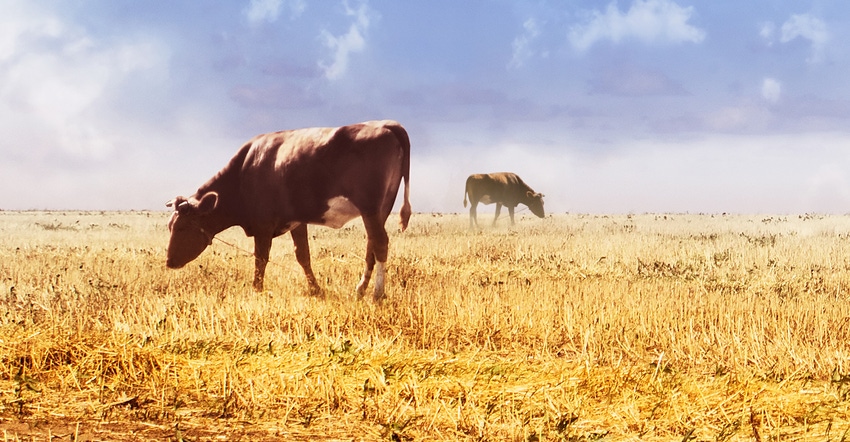June 26, 2019

Farmers who plant cover crops on prevented planting acres will be allowed to hay, graze or chop those fields beginning Sept. 1, instead of having to wait until November. USDA’s Risk Management Agency made the announcement June 20.
RMA is adjusting this year’s final haying and grazing date to help farmers who were prevented from planting corn and soybeans because of flooding and excessive rain this spring.
“This is a one-year adjustment,” says Martin Barbre, RMA administrator. “RMA will evaluate the prudence of a permanent adjustment moving forward.” Haying, grazing or chopping the forage on cover crop fields on or after Sept. 1 will not affect a farmer’s eligibility for the full 2019 prevented planting indemnity payment.
Iowa farmers are happy with USDA’s decision to allow grazing and haying of prevented planting cover crop acres beginning in September, especially farmers with cattle who are facing the prospect of running short of hay. Supplies are already tight, and this year’s hay crop won’t be a big one. Supplementing it with forage from cover crops will help.
Helping cope with forage shortage
“We recognize farmers were greatly impacted by some of the unprecedented flooding and excess rain this spring, and we made this adjustment to help farmers with the tough decisions they are facing this year,” says USDA Undersecretary of Agriculture Bill Northey. “This change will make good stewardship of the land easier to accomplish, while also providing an opportunity to ensure quality forage is available for livestock this fall.”
In issuing this new rule for 2019, RMA has determined that silage, haylage and baleage should be treated in the same manner as haying or grazing the cover crops this year. “Farmers can hay, graze or cut cover crops for silage, haylage or baleage on prevented planting acres on or after Sept. 1 and still maintain eligibility for their full 2019 prevented planting indemnity payment,” Northey says.
Other USDA programs assisting
Other USDA agencies are also assisting farmers with delayed or prevented planting issues. The Farm Service Agency is extending the deadline to report prevented planting acres in select counties, and USDA’s Natural Resources Conservation Service is holding special sign-ups for the Environmental Quality Incentives Program in certain states to help with planting cover crops on impacted land.
“Contact your local FSA and NRCS offices to learn more,” Northey advises. “Also, you can read our frequently asked questions and answers to learn more about prevented planting.”
USDA is encouraging farmers to plant cover crops on prevented planting acres. On June 10, the agency released the question-and-answer page online addressing trade aid (USDA Market Facilitation Program) and federal disaster assistance availability and eligibility. A farmer who plants a cover crop on prevented planting acres will be eligible for an MFP payment on those acres, but land left bare on a prevented planting claim would not be eligible for an MFP payment.
Producers asked USDA for more flexibility
Several lawmakers from both parties pushed for the change in the haying and grazing date, as did Farm Bureau and cattle producers in Upper Midwest states. “The Iowa Cattlemen’s Association is appreciative that RMA and USDA responded to the concerns of cattle producers,” says Matt Deppe, ICA’s chief executive officer. “The new adjusted timeline provides much more flexibility and availability of forage for cattlemen this fall.”
RMA will continue to evaluate a permanent adjustment, Deppe says. ICA is continuing to advocate for the Feed Emergency Enhancement During Disasters Act, which would permanently authorize the U.S. secretary of agriculture to allow haying, grazing and baling of cover crops on prevented planting acres prior to Nov. 1. Reps. Dave Loebsack, Abby Finkenauer and Cindy Axne, all of Iowa, are co-sponsors of this bill in Congress.
“The harsh winter and wet spring we’ve had have caused many challenges for Iowa farmers,” Deppe says. “Through phone calls and discussions at our June BeefMeets meetings around the state, ICA members have made it clear that increased forage access is needed. ICA staff and board members have been reaching out to Iowa’s congressional delegation over the past month to find a solution and provide more flexibility to beef producers across the state.”
About the Author(s)
You May Also Like






